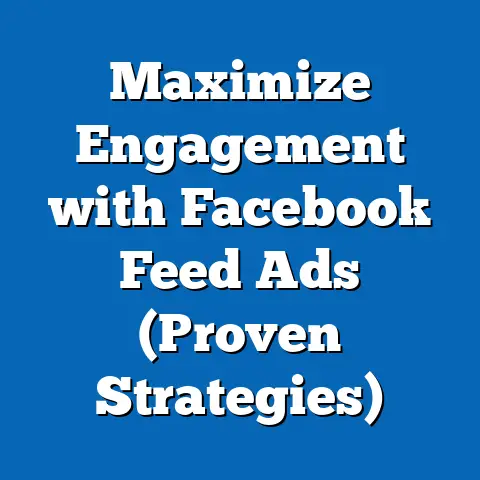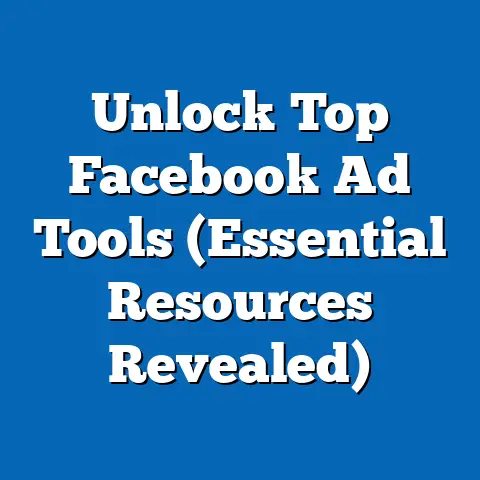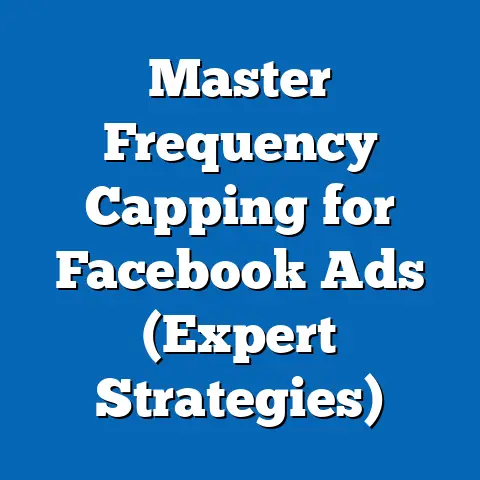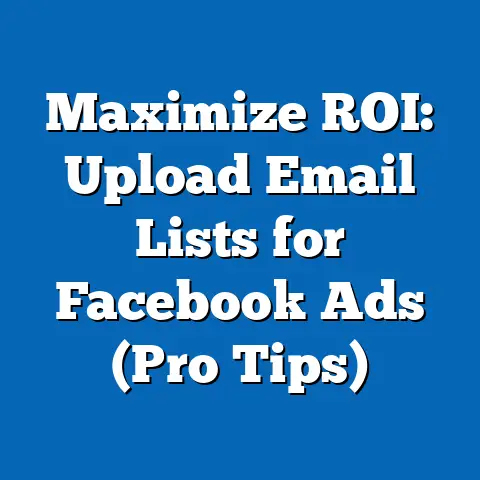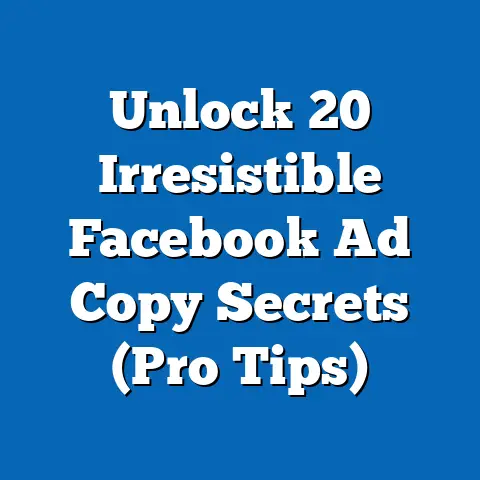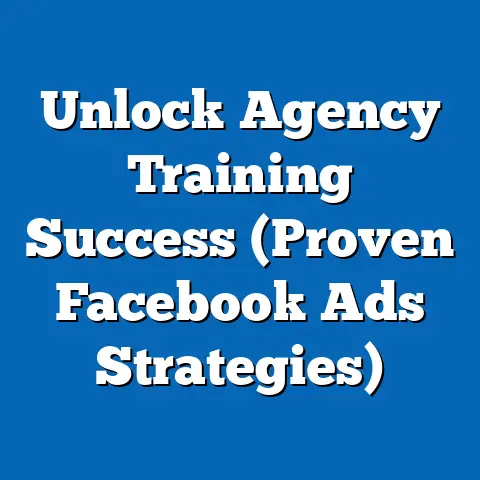Unlock Catering fb ad Potential (Proven Strategies)
Are you a catering business owner or marketer feeling like you’re throwing money into the Facebook Ads abyss? You’re not alone. Despite the booming growth of social media advertising, I’ve seen countless catering businesses struggle to achieve substantial results from their Facebook ad campaigns. Limited engagement, low conversion rates, and targeting that feels like shooting in the dark – these are the common pain points.
It’s frustrating, isn’t it? You know Facebook has the potential to connect you with tons of new customers, eager to book your services for weddings, corporate events, and family gatherings. But for many, that potential remains just out of reach. Why? Because simply running ads isn’t enough. You need a strategic approach, a deep understanding of the platform, and a willingness to adapt and optimize.
I’m here to tell you that success with Facebook Ads for catering is absolutely achievable. This isn’t about luck; it’s about leveraging proven strategies and understanding the unique nuances of the catering industry. In this guide, I’m going to walk you through the steps to unlock the full potential of your Facebook advertising efforts. I’ll share actionable insights, real-world examples, and practical tips that you can implement immediately to see a tangible difference in your campaign performance. Let’s ditch the guesswork and start building a Facebook ad strategy that actually delivers results for your catering business.
Section 1: Understanding the Facebook Advertising Landscape for Catering
Facebook, now under the Meta umbrella, isn’t just a social network; it’s a powerful advertising platform. And for catering businesses, it offers a particularly compelling opportunity. Let’s break down why.
Why Facebook Matters for Catering
- Massive Reach: Facebook boasts billions of active users worldwide. While not all are your ideal customers, the sheer volume means you have a huge pool of potential clients to tap into.
- Granular Targeting: This is where Facebook truly shines. You can target users based on demographics (age, location, income), interests (wedding planning, gourmet food, corporate events), behaviors (frequent travelers, small business owners), and even custom audiences based on your existing customer data.
- Visual Storytelling: Catering is a visual business. Mouthwatering photos and videos of your food, beautifully set tables, and happy guests are incredibly powerful on Facebook. The platform is designed to showcase visual content, making it perfect for highlighting your offerings.
- Local Focus: Most catering businesses primarily serve a local area. Facebook’s location-based targeting allows you to focus your ads on potential customers within a specific radius of your business, maximizing your ROI.
- Measurable Results: Unlike traditional advertising, Facebook Ads provide detailed analytics. You can track your ad spend, impressions, clicks, conversions, and more, allowing you to see exactly how your campaigns are performing and make data-driven adjustments.
According to Statista, as of 2023, Facebook remains the most used social media platform globally, with billions of monthly active users. This means even with niche targeting, you’re accessing a massive audience relevant to your catering business.
Unique Challenges and Opportunities in the Catering Industry
The catering industry presents both unique challenges and exciting opportunities for Facebook advertisers.
- Seasonal Demand: Catering is often driven by seasonal events like weddings (spring and summer), holidays (Thanksgiving and Christmas), and corporate events (year-end parties). Your advertising strategy needs to be flexible and adaptable to these fluctuations in demand.
- Event-Driven Marketing: Unlike businesses with consistent, year-round demand, catering is often tied to specific events. This means your ads need to be timely and relevant, targeting users who are actively planning an event.
- Local Competition: The catering market is often highly competitive, with numerous local businesses vying for the same customers. Your ads need to stand out from the crowd and highlight what makes your catering services unique.
- Building Trust: Catering is a high-trust industry. People are entrusting you with a significant part of their special event. Your ads need to build trust and credibility by showcasing your expertise, professionalism, and positive customer reviews.
Opportunity: * Hyper-Local Targeting: Catering services are inherently local. Leverage Facebook’s precise geographic targeting to reach people within a defined radius of your business or event venues. * Seasonal Promotions: Tailor ads to match seasonal events and holidays. For example, promote Thanksgiving catering packages in the fall or wedding catering services in the spring. * Visual Appeal: Showcase your cuisine through high-quality photos and videos. Before-and-after shots of event setups can also demonstrate your expertise and attention to detail. * Social Proof: Use customer testimonials and reviews in your ads to build trust and credibility. Positive feedback from past clients can significantly influence potential customers.
The Customer Journey and Facebook Ads
Understanding the customer journey is crucial for crafting effective Facebook ads. The customer journey typically consists of the following stages:
- Awareness: The potential customer becomes aware of your catering business.
- Consideration: The potential customer researches and compares different catering options.
- Conversion: The potential customer chooses your catering services and books an event.
Your Facebook ads should align with each stage of the customer journey.
- Awareness Ads: These ads should focus on introducing your catering business to a wider audience. Use visually appealing content and broad targeting to reach potential customers who may not be actively looking for catering services yet.
- Consideration Ads: These ads should target potential customers who are actively researching catering options. Highlight your unique selling points, showcase your menu options, and provide social proof to build trust.
- Conversion Ads: These ads should target potential customers who are ready to book an event. Use strong calls to action and offer incentives to encourage them to contact you for a quote or consultation.
Takeaway: Facebook offers a powerful platform for catering businesses to reach a large, targeted audience, showcase their visual offerings, and drive measurable results. Understanding the unique challenges and opportunities of the catering industry and aligning your ads with the customer journey is crucial for success.
Section 2: Crafting Compelling Ad Content
Your ad content is the first impression you make on potential customers. It needs to be visually appealing, informative, and persuasive. Here’s how to craft compelling ad content that converts.
Elements of High-Performing Facebook Ads
- Visuals: High-quality images or videos that grab attention and showcase your catering offerings.
- Headline: A concise and compelling headline that highlights the key benefit of your catering services.
- Body Copy: A brief and persuasive description that explains why potential customers should choose your catering business.
- Call to Action (CTA): A clear and direct instruction that tells potential customers what you want them to do (e.g., “Get a Quote,” “Book Now,” “Learn More”).
Showcasing Your Catering Offerings
- Visually Appealing Food Photography: Invest in professional food photography that showcases your dishes in their best light. Use high-resolution images that are well-lit and styled.
- Videos That Capture the Experience: Create videos that capture the experience of your catering services. Show behind-the-scenes footage of your team preparing food, setting up events, and interacting with guests.
- Before-and-After Shots: Showcase your transformation skills with before-and-after shots of event setups. This demonstrates your attention to detail and ability to create a memorable experience.
Storytelling in Ads
People connect with stories. Share stories about your catering business, your team, and your satisfied customers.
- Share Your Origin Story: How did your catering business get started? What motivates you to provide exceptional service?
- Highlight Customer Success Stories: Share stories about how your catering services helped make a customer’s event a success.
- Focus on the Emotional Connection: Catering is about more than just food; it’s about creating memorable experiences. Focus on the emotional connection that people have with food and events.
For example, I once ran an ad campaign for a catering company specializing in weddings. Instead of just showing pictures of food, we created a short video featuring a bride and groom reminiscing about their perfect wedding day, highlighting how the catering company helped make their dream a reality. This ad resonated deeply with potential customers and generated a significant increase in inquiries.
Social Proof
Customer testimonials and reviews are powerful tools for building trust and credibility.
- Include Customer Testimonials in Your Ads: Feature positive customer testimonials in your ad copy or visuals.
- Showcase Your Online Reviews: Highlight your positive reviews on Facebook, Google, and other review platforms.
- Encourage Customers to Leave Reviews: Make it easy for satisfied customers to leave reviews by providing them with direct links to your review platforms.
Takeaway: Compelling ad content is essential for capturing the attention of potential customers and driving conversions. Focus on high-quality visuals, persuasive copy, storytelling, and social proof to create ads that resonate with your target audience.
Section 3: Targeting the Right Audience
Even the most compelling ad content will fail if it’s not shown to the right people. Facebook’s targeting options are incredibly powerful, allowing you to reach specific segments of your audience with tailored messages.
Facebook Targeting Options
- Demographics: Target users based on age, gender, location, education, relationship status, and more.
- Interests: Target users based on their interests, hobbies, and activities.
- Behaviors: Target users based on their online and offline behaviors, such as purchase history, travel habits, and device usage.
- Custom Audiences: Target users based on your own customer data, such as email lists, website visitors, and app users.
- Lookalike Audiences: Target users who are similar to your existing customers.
Identifying Your Ideal Customer Segments
- Wedding Planners: Target users who are interested in wedding planning, engaged, or recently married.
- Corporate Event Organizers: Target users who work in human resources, event planning, or marketing at companies in your local area.
- Families Planning Parties: Target users who are parents, homeowners, or interested in party planning.
- Luxury Consumers: Target users who have a high household income and are interested in luxury goods and services.
Pro Tip: Don’t be afraid to experiment with different targeting options to see what works best for your catering business. Start with broad targeting and gradually narrow your audience based on performance data.
Retargeting
Retargeting allows you to reach potential customers who have previously interacted with your brand. This is a highly effective strategy for driving conversions.
- Website Visitors: Retarget users who have visited your website but haven’t yet contacted you for a quote or consultation.
- Facebook Page Engagers: Retarget users who have liked your Facebook page, commented on your posts, or watched your videos.
- Email List Subscribers: Retarget users who are subscribed to your email list but haven’t yet booked an event.
Takeaway: Targeting the right audience is crucial for maximizing the effectiveness of your Facebook ads. Use a combination of demographic, interest, behavior, custom, and lookalike audiences to reach your ideal customer segments. Don’t forget to retarget potential customers who have previously interacted with your brand.
Section 4: Budgeting and Bidding Strategies
Setting a realistic ad budget and choosing the right bidding strategy are essential for maximizing your return on investment.
Setting a Realistic Ad Budget
- Industry Benchmarks: Research industry benchmarks for Facebook ad spending to get a sense of what other catering businesses are spending.
- Business Goals: Determine your business goals for Facebook advertising. Are you looking to increase brand awareness, generate leads, or drive sales?
- Customer Acquisition Cost (CAC): Calculate your customer acquisition cost to determine how much you’re willing to spend to acquire a new customer.
- Lifetime Value (LTV): Calculate the lifetime value of a customer to determine how much you can afford to spend on acquiring them.
As a rule of thumb, I often advise clients to start with a smaller budget and gradually increase it as they see positive results. It’s better to test the waters and optimize your campaigns before committing to a large investment.
Bidding Strategies
Facebook offers a variety of bidding strategies, each designed to achieve different objectives.
- Lowest Cost: Facebook automatically bids to get you the most results for your budget. This is a good option for beginners who are looking to maximize their reach.
- Cost Per Result Goal: You set a target cost per result (e.g., cost per lead) and Facebook bids to achieve that goal. This is a good option for businesses that have a clear understanding of their target cost per acquisition.
- Value Optimization: Facebook bids to get you the highest value conversions for your budget. This is a good option for businesses that are selling products or services with different price points.
- Manual Bidding: You manually set your bids for each ad auction. This is a more advanced option that requires a deep understanding of Facebook’s advertising algorithm.
Takeaway: Setting a realistic ad budget and choosing the right bidding strategy are crucial for maximizing your return on investment. Consider industry benchmarks, business goals, customer acquisition cost, and lifetime value when setting your budget. Experiment with different bidding strategies to see what works best for your catering business.
Section 5: Analyzing Performance and Making Adjustments
Facebook Ads Manager provides a wealth of data that you can use to analyze the performance of your campaigns and make informed adjustments.
Key Performance Indicators (KPIs)
- Impressions: The number of times your ads are shown to potential customers.
- Reach: The number of unique users who have seen your ads.
- Clicks: The number of times users have clicked on your ads.
- Click-Through Rate (CTR): The percentage of users who have seen your ads and clicked on them.
- Cost Per Click (CPC): The average cost you pay for each click on your ads.
- Conversions: The number of users who have completed a desired action (e.g., filled out a form, booked an event).
- Conversion Rate: The percentage of users who have clicked on your ads and completed a desired action.
- Cost Per Conversion (CPC): The average cost you pay for each conversion.
- Return on Ad Spend (ROAS): The amount of revenue you generate for every dollar you spend on Facebook ads.
A/B Testing
A/B testing allows you to compare different versions of your ads to see which one performs best.
- Ad Creatives: Test different images, videos, headlines, and body copy.
- Targeting Options: Test different demographic, interest, and behavior targeting options.
- Ad Formats: Test different ad formats, such as single image ads, video ads, and carousel ads.
Using Facebook Ads Manager
- Review Performance Metrics: Regularly review your performance metrics in Facebook Ads Manager to identify trends and areas for improvement.
- Adjust Bids: Adjust your bids based on performance data to optimize your spending and maximize your return on investment.
- Pause Underperforming Ads: Pause ads that are not performing well to avoid wasting your budget.
- Scale Successful Ads: Scale ads that are performing well to reach a wider audience and generate more conversions.
Takeaway: Analyzing performance data and making adjustments is crucial for optimizing your Facebook ad campaigns. Track your KPIs, conduct A/B tests, and use Facebook Ads Manager to make informed decisions about your bidding, targeting, and ad creatives.
Section 6: Leveraging User-Generated Content and Community Engagement
Beyond paid advertising, leveraging user-generated content (UGC) and fostering community engagement on Facebook can significantly boost your catering business.
The Power of User-Generated Content
UGC refers to content created by your customers, such as photos, videos, and reviews. It’s an incredibly powerful marketing tool because it’s authentic, trustworthy, and cost-effective.
- Encourage Customers to Share Photos: Encourage customers to share photos of their events that you catered. Offer incentives, such as discounts or free appetizers, for customers who submit photos.
- Run Contests and Giveaways: Host contests and giveaways that encourage customers to share UGC. For example, you could ask customers to submit photos of their favorite dishes that you cater.
- Feature UGC on Your Facebook Page: Feature UGC on your Facebook page to showcase your catering services and build social proof.
I remember a catering company I worked with launched a campaign asking customers to share photos of their events using a specific hashtag. The response was overwhelming! The company was able to use these photos in their ads and on their website, creating a sense of authenticity and connection that resonated with potential customers.
Community Engagement
Engaging with your community on Facebook can help you build relationships, increase brand awareness, and drive conversions.
- Respond to Comments and Messages: Respond promptly to comments and messages on your Facebook page. Show your customers that you care about their feedback.
- Create Polls and Quizzes: Create polls and quizzes that are relevant to your catering services. This is a fun and engaging way to interact with your audience.
- Host Live Q&A Sessions: Host live Q&A sessions on Facebook to answer questions about your catering services. This is a great way to build trust and credibility.
- Share Behind-the-Scenes Content: Share behind-the-scenes content of your team preparing food, setting up events, and interacting with guests. This helps to humanize your brand and build a connection with your audience.
Takeaway: Leveraging UGC and fostering community engagement on Facebook can significantly boost your catering business. Encourage customers to share photos and reviews, respond to comments and messages, create engaging content, and share behind-the-scenes content.
Conclusion: The Path Forward
Remember that challenge I posed at the beginning? The one about struggling with Facebook Ads and feeling like you’re not getting the results you deserve? I hope this guide has shown you that success is within reach.
With the right strategies, catering businesses can unlock the immense potential of Facebook advertising. It’s not about magic or overnight success; it’s about understanding the platform, crafting compelling content, targeting the right audience, setting realistic budgets, analyzing performance, and engaging with your community.
I encourage you to implement the proven strategies discussed in this article. Experiment with different ad creatives, targeting options, and bidding strategies. Track your KPIs, conduct A/B tests, and use Facebook Ads Manager to make informed decisions about your campaigns.
Don’t view Facebook ads as just an expense; view them as a valuable investment in your business growth. Take the first step towards transforming your advertising efforts and achieving tangible results through the power of Facebook. Your next client, your next successful event, your next wave of growth – it could all start with a well-crafted, strategically targeted Facebook ad.
What’s stopping you from getting started today? Take that first step, embrace the strategies I’ve outlined, and watch your catering business flourish.

